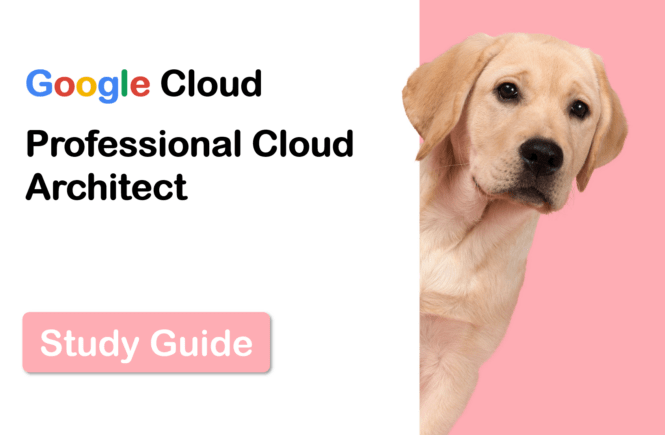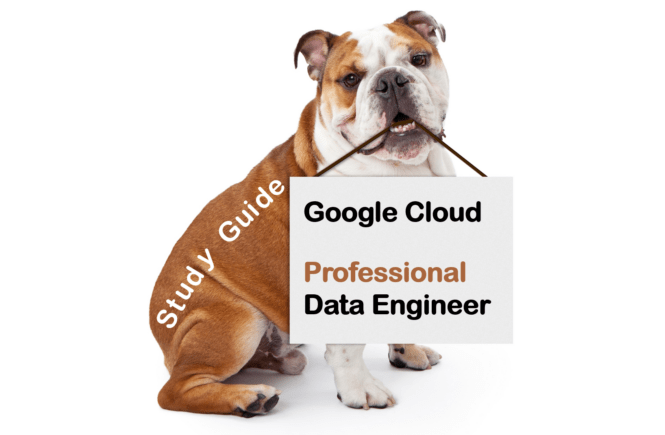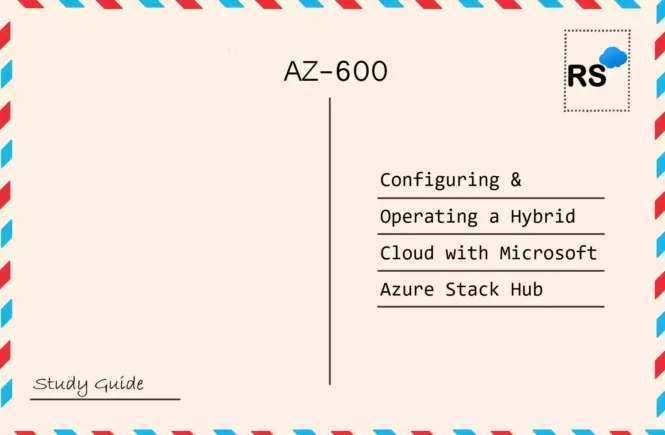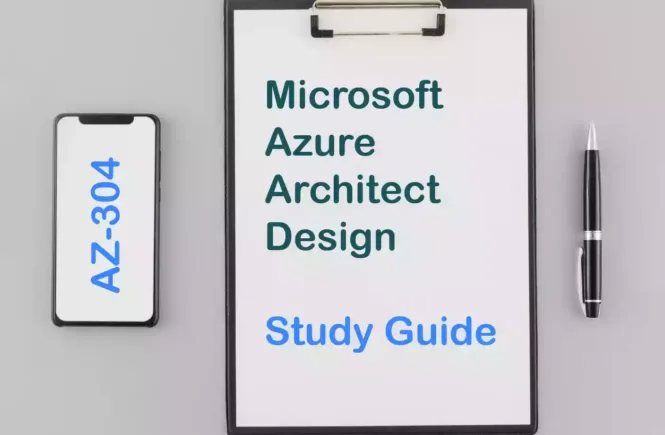GCP Professional Cloud Architect Prep
Preparing for the GCP Professional Cloud Architect exam? Don’t know where to start? This post is the GCP Professional Cloud Architect Certification Study Guide (with links to each objective in the exam domain).
I have curated a detailed list of articles from the Google documentation and other blogs for each objective of the Google Cloud Platform Professional Cloud Architect exam. Please share the post within your circles so it helps them to prepare for the exam.
GCP Professional Cloud Architect Course
| Pluralsight (Learning Path) | GCP certified Cloud Architect course |
| Coursera (Professional Cert.) | Cloud Architect Professional preparation |
| Udemy | Professional Cloud Architect certification |
Google Professional Cloud Architect Practice Test
| Whizlabs Exam Questions | GCP Architect (300+ Qs & FREE Labs) |
| Udemy Practice Tests | Cloud Architect Practice Questions |
| Amazon e-book (PDF) | Professional Cloud Architect Study Guide |
Check out all the other GCP certificate study guides
Full Disclosure: Some of the links in this post are affiliate links. I receive a commission when you purchase through them.
Section 1. Designing and planning a cloud solution architecture
1.1 Designing a solution infrastructure that meets business requirements. Considerations include:
Business use cases and product strategy
Help secure data workloads: Google Cloud use cases
Cost optimization
Optimize your Google Cloud costs
Cost optimization on Google Cloud
Supporting the application design
Google Cloud architecture framework
Design your company architecture on GCP
Integration with external systems
Integrate Google Cloud Deploy with other systems
Integration with Google Cloud services
Movement of data
Transferring your large datasets
Design decision trade-offs
Trade-offs in the choice of cloud service
Build, buy, modify, or deprecate
Update, deprecate, & delete container images
Success measurements (e.g., key performance indicators [KPI], return on investment [ROI], metrics)
KPIs for APIs: How do metrics change over time?
9 things to consider when measuring ROI in the cloud
Compliance and observability
Cloud compliance & regulations
Designing for observability on Google Cloud
1.2 Designing a solution infrastructure that meets technical requirements. Considerations include:
High availability and failover design
Design for scale and high availability
High Availability, Failover design
The elasticity of cloud resources with respect to quotas and limits
Scalability to meet growth requirements
Patterns for scalable and resilient apps
Using autoscaling for highly scalable applications
Performance and latency
Measure and compare the performance
Optimizing application latency with load balancing
1.3 Designing network, storage, and compute resources. Considerations include:
Integration with on-premises/multicloud environments
GKE on-prem integration with GCP & enterprise network
Cloud-native networking (VPC, peering, firewalls, container networking)
Choosing data processing technologies
Choosing appropriate storage types (e.g., object, file, databases)
Object vs block vs file: which one to choose?
Choosing compute resources (e.g., preemptible, custom machine type, specialized workload)
Mapping compute needs to platform products
1.4 Creating a migration plan (i.e., documents and architectural diagrams). Considerations include:
Integrating solutions with existing systems
Integration with Google Cloud services and tools
Migrating systems and data to support the solution
Software license mapping
Network planning
Reference architectures for VPC design
Testing and proofs of concept
Creating a test clone | Migrate for Compute Engine
Dependency management planning
1.5 Envisioning future solution improvements. Considerations include:
Cloud and technology improvements
Improvements to Google Cloud infrastructure
Evolution of business needs
Your business evolution strategy
Evangelism and advocacy
Developers, Evangelists, and Champions
Amazon link (affiliate)
Section 2. Managing and provisioning a solution infrastructure
2.1 Configuring network topologies. Considerations include:
Extending to on-premises environments (hybrid networking)
Google Cloud Hybrid Connectivity
Hybrid connectivity and network management
Extending to a multi-cloud environment that may include Google Cloud to Google Cloud communication
Hybrid and multi-cloud patterns and practices
Security protection (e.g. intrusion protection, access control, firewalls)
2.2 Configuring individual storage systems. Considerations include:
Data storage allocation
Best practices for Cloud Storage
Data processing/compute provisioning
Provisioning VMs on sole-tenant nodes
Security and access management
Identity and Access Management
Network configuration for data transfer and latency
Configuring VMs for networking use cases
5 steps to better GCP network performance
Data retention and data life cycle management
Data growth planning
How does your cloud storage grow?
2.3 Configuring compute systems. Considerations include:
Compute resource provisioning
Creating and starting a VM instance
Compute volatility configuration (preemptible vs. standard)
Preemptible VMs, a compute available at 70% off standard pricing
Network configuration for Compute resources (Google Compute Engine, Google Kubernetes Engine, serverless networking)
Configuring VMs for networking use cases
Network overview in Kubernetes Engine
Infrastructure orchestration, resource configuration, and patch management
Choosing the right orchestrator in Google Cloud
Automating infrastructure with Cloud Composer
Container orchestration
Section 3. Designing for security and compliance
3.1 Designing for security. Considerations include:
Identity and access management (IAM)
Resource hierarchy (organizations, folders, projects)
Quickstart using organizations
Data security (key management, encryption, secret management)
Cloud Key Management Service deep dive
Secret Manager conceptual overview
Separation of duties (SoD)
Separation of duties & IAM roles
Security controls (e.g., auditing, VPC Service Controls, context-aware access, organization policy)
Setting up context-aware access with Identity-Aware Proxy
Introduction to the Organization Policy Service
Managing customer-managed encryption keys with Cloud Key Management Service
Customer-managed encryption keys
Remote access
Configure remote access for Compute Engine VMs
3.2 Designing for compliance. Considerations include:
Legislation (e.g., health record privacy, children’s privacy, data privacy, and ownership)
HIPAA Compliance on Google Cloud Platform
Commercial (e.g., sensitive data such as credit card information handling, personally identifiable information [PII])
PCI Data Security Standard compliance
Comprehensive protection of PII in GCP
Industry certifications (e.g., SOC 2)
Audits (including logs)
Cloud Compliance & regulations resources
Section 4. Analyzing and optimizing technical and business processes
4.1 Analyzing and defining technical processes. Considerations include:
Software development life cycle (SDLC)
Google introduces SLSA framework
Continuous integration / continuous deployment
Continuous deployment from Git using Cloud Build
Troubleshooting/root cause analysis best practices
Troubleshooting tips that can help your cloud provider help you
Testing and validation of software and infrastructure
Service catalog and provisioning
Dedicated interconnect provisioning overview
Business continuity and disaster recovery
Business continuity planning and disaster recovery
4.2 Analyzing and defining business processes. Considerations include:
Stakeholder management (e.g. influencing and facilitation)
Cloud stakeholders as per NIST
Change management
Team assessment/skills readiness
Assessing and discovering your workloads
Decision-making processes
Customer success management
Cost optimization / resource optimization (CAPEX / OPEX)
CapEx vs OpEx in cloud computing
4.3 Developing procedures to ensure the reliability of solutions in production (e.g., chaos engineering, penetration testing)
Chaos: Break your systems to make the unbreakable
Google Cloud penetration testing
Section 5. Managing implementation
5.1 Advising development/operation team(s) to ensure successful deployment of the solution. Considerations include:
Application development
Developing made easy on Google Cloud Platform
API best practices
Design & manage APIs: Best practices & common pitfalls
Testing frameworks (load/unit/integration)
Load testing and monitoring AI Platform models
Distributed load testing using Google Kubernetes Engine
Continuous integration testing with Cloud Build
Data and system migration and management tooling
5.2 Interacting with Google Cloud programmatically. Considerations include:
Google Cloud Shell
Running gcloud commands with Cloud Shell
Google Cloud SDK (gcloud, gsutil and bq)
Using the bq command-line tool
Cloud Emulators (e.g. Cloud Bigtable, Datastore, Spanner, Pub/Sub, Firestore)
Use the emulator for Cloud Bigtable
Running the Datastore Emulator
Using the Cloud Spanner Emulator
Testing apps locally with the emulator
gcloud beta emulators firestore
Section 6. Ensuring solution and operations reliability
6.1 Monitoring/logging/profiling/alerting solution
How to get started with Google Cloud Monitoring?
Centralized logging solution for Google Cloud Platform
Measure app performance by using Cloud Profiler
See how your code executes with Stackdriver Profiler
Alerting best practices for Google Cloud Monitoring
6.2 Deployment and release management
Google Cloud Deploy automates deploys to GKE
Best practices for securing your cloud deployment
6.3 Assisting with the support of deployed solutions
Active Assist Cloud Management
6.4 Evaluating quality control measures
Cloud Compliance & regulations resources
This brings us to the end of the GCP Professional Cloud Architect Study Guide.
What do you think? Let me know in the comments section if I have missed out on anything. Also, I love to hear from you about how your preparation is going on!
In case you are preparing for other GCP certification exams, check out the GCP study guide for those exams.
Get Updates on CGP Professional Architect Exam
Want to be notified as soon as I post? Subscribe to the RSS feed / leave your email address in the subscribe section. Share the article to your social networks with the below links so it can benefit others.




